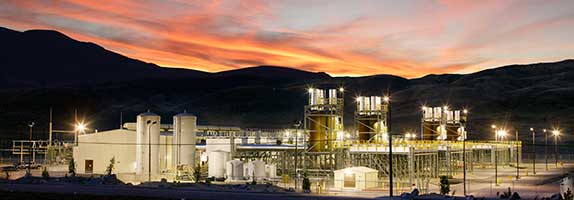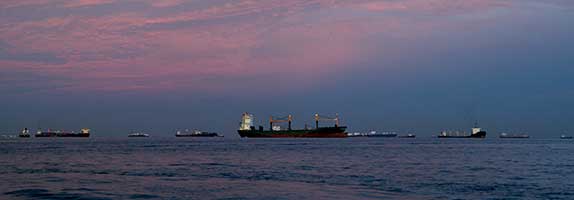


South Africa, as an energy-intensive economy, is a major contributor to greenhouse carbon emissions, sourcing an estimated 77% of electricity from coal. However, together with many other countries across the world, South Africa is committed to making the necessary transitions to reach net-zero carbon emissions by 2050. With increasing power outages and the ongoing threat of loadshedding, the need for sustainable energy production in the country is becoming more apparent. This presents an opportunity for South Africa to re-evaluate energy consumption and turn to alternative solutions for its daily usage.
Challenges in the energy sector
The latest COP26 finance arrangement, which is assisting South Africa (SA) to transition to renewable energy sources, has gained large momentum. Of all the energy sources, solar is the most viable, and the most sought-after. However, even in the hottest regions, the panels can only produce electricity for a maximum of 12 hours a day, therefore only converting a small percentage of available power into usable energy. This is also the case with windmills. The wind doesn’t always blow hard enough, and sometimes doesn’t blow at all, to produce the energy needed. Energy use and preservation is rife with challenges, and the need for improvements is necessary.
This is where thermal balancing becomes beneficial, as it can store excess energy from renewable sources. Thermal systems can assist in creating balance for energy demand and supply, reducing peak demand and consumption by storing energy for when it is most needed and increasing its efficiency and reliability. Thus, the conversion and storage of renewable energy in the form of thermal energy can also aid in the acceleration of renewables in the energy mix.
The Integrated Resource Plan (IRP), which coordinates the national drive for generation expansion and demand-side intervention programmes, supports a diverse energy mix, aiming to develop an effective balance of energy supply and demand. But, guaranteeing that people get power when and where needed is not as simple as sounds. South Africa’s population is growing at an unprecedented rate, and with the upsurge of industrialisation in a developing nation like ours, the need for the continuous supply of energy is skyrocketing. The increase is due to mounting energy use in households – by heating and cooling systems for example – and in commercial businesses, like warehousing.
Energy storage: maintaining supply and demand
So, how do we keep the lights on in SA with an energy mix where we have an increasingly higher share, and is energy storage a solution? To avoid excess energy from being left unused in off-peak periods, we need to store energy correctly. Energy and thermal storage enable us to save on electricity costs. Wind energy, for example, can be leveraged overnight, when you use the least amount of power as everyone is sleeping.
The South African energy storage market is expected to continue to expand in the coming decades, growing as a key area of energy services in the future.
The anticipated development in energy and thermal storage will create opportunities for further growth, and encourage involvement for manufacturers, suppliers and investors.
Working with a well-developed global logistics chain and having long-term agreements with trusted suppliers, Wärtsilä‘s energy storage and thermal solutions match the existing demand in energy supply by integrating traditional and renewable power sources and optimising multiple generation assets.
Integrated energy mix solutions
While becoming a global leader in energy supply may seem ambitious, Wärtsilä affirms that it’s possible for the country to reach a complete renewable energy system. Achieving this will require an energy transition that is supported by thermal balancing, a mix of energy technologies and effective battery energy solutions. One of the ways in which Wärtsilä enhances the energy lifecycle and integrates renewables is through the GEMS Digital Energy Platform.
The software suite monitors, controls and optimises energy systems in real-time. It can also determine what type of generation is needed at a particular moment, whether it be renewables, energy storage, or engines. In the case that a cloud momentarily obscures the sun, GEMS can prompt the system to rapidly release energy stored in batteries. This ensures that consumers have energy stored for when they need it the most – and the least – and coincides with COPS objective for reduced carbon emissions.
Government and stakeholder support
Wärtsilä is committed to enabling South Africa’sdecarbonisation objectives. These can be seen in the South African energy mix, which comprise of coal, renewables, gas, hydroelectric and nuclear power. In alignment with the local zero-carbon emission goals, green hydrogen is one of the sources that will provide several opportunities for sustainable energy for the region. Unlike most hydrogen that is produced from natural gas, green hydrogen is extracted from water and has the capacity to be stored more easily, and for a prolonged time, compared to other renewable resources. As a result, it positively contributes to and promotes energy security. In support of low-carbon production, industry stakeholders will need to engage with government and compile policy reviews and re-evaluation.
The increase in investment in the energy mix and distributed generation capacity will allow for effective operation on the demand and supply of electricity. If the energy sector can build equilibrium in this regard, South Africa will ultimately stand a chance of becoming a supplier in green hydrogen and energy storage, and play a more dominant role as a global energy competitor in energy supply.
Click here to discover more about what Wärtsilä Energy is doing in Africa.